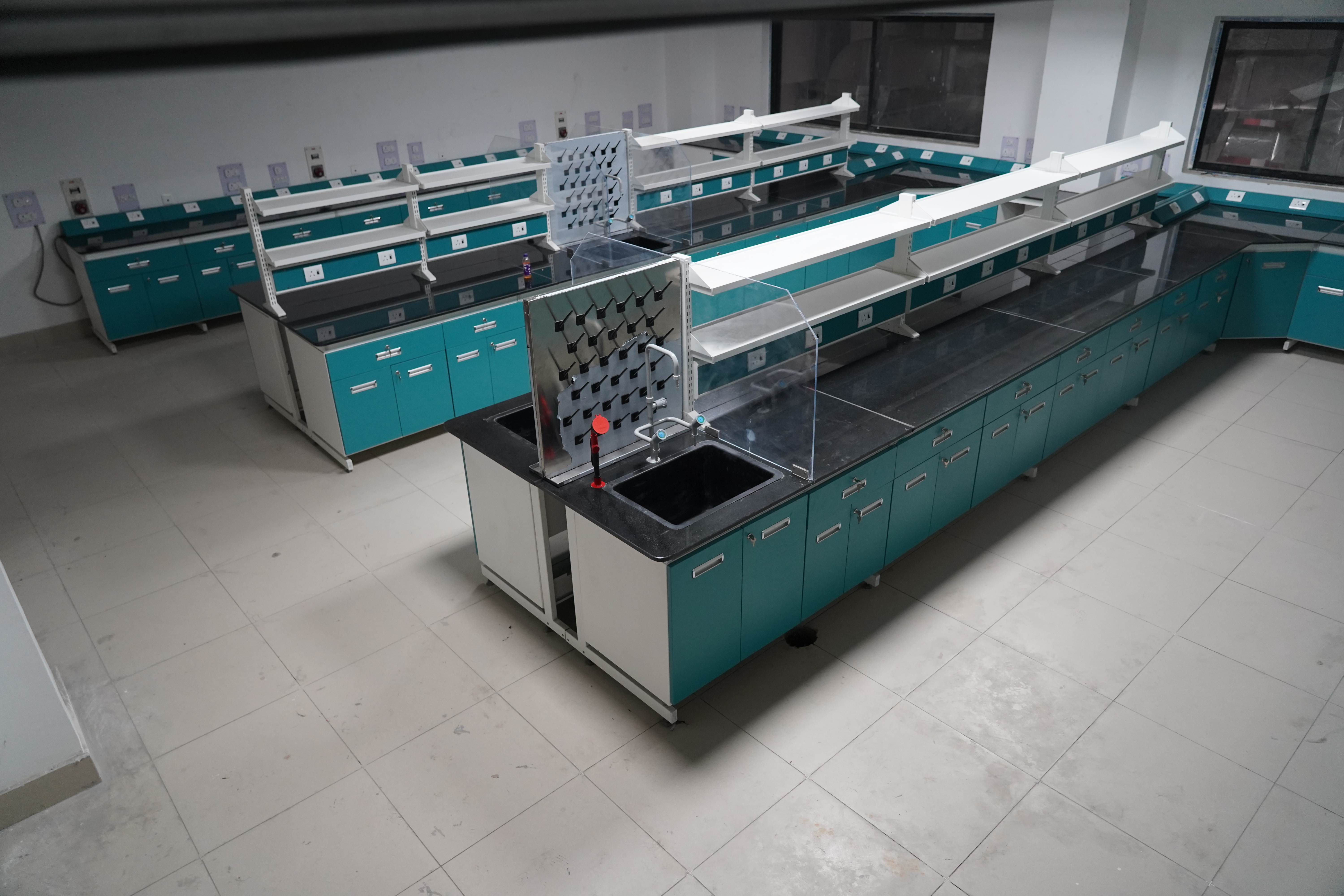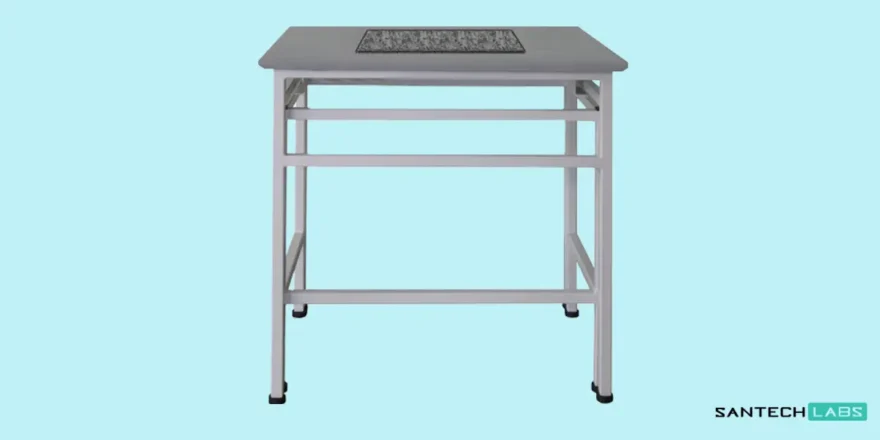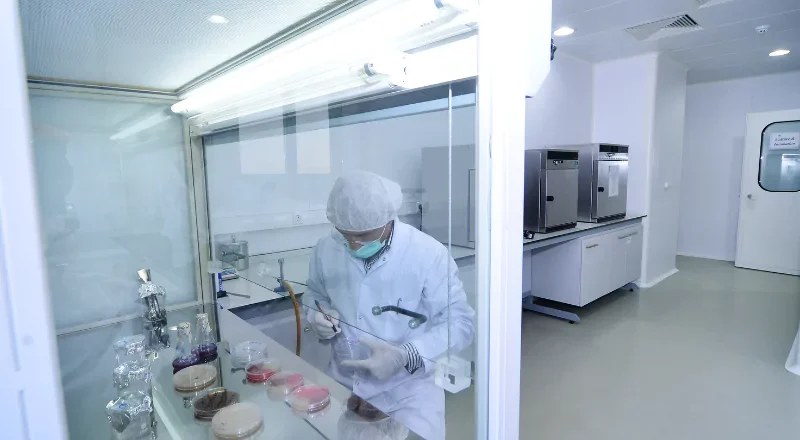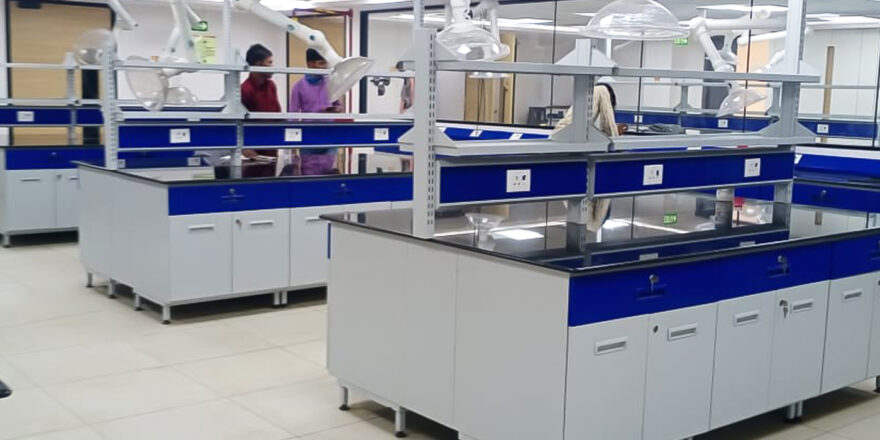The design team and other relevant stakeholders collaborate and coordinate extensively to create successful laboratories. Even the tiniest detail can have a negative impact on lab function and safety, so getting these environments right for the scientists who work in them is crucial. A safe laboratory environment can be achieved only when the laboratory design is meticulously engineered to meet health and safety protection criteria.
Following are a few crucial aspects to keep in mind while designing an efficient laboratory system that is functional too.
Everyone’s Ideas Matter
Understanding the user’s perspective is essential. The lab workers will conduct great experiments, so looking out for their needs is mandatory. A perfect lab design needs a collaborative effort. To meet all technical disciplines–the mechanical, plumbing and electrical departments need to unite to bring out an impeccably productive layout for the lab. This will also boost the visual appeal of the entire frame with organised furniture.
Size Lab For Adequate Storage Spacing
Inadequate bench and equipment storage space, inflexibility or limited growth, and limited lab functioning can all come from failing to adequately size the lab to meet user needs. Putting additional cabinetry, a storage closet, or shelves in your laboratory can help you make more storage space. An ample repository room is essential to good laboratory design, as it leads to a safer and more productive workplace. Safety and productivity difficulties can be reduced if your lab has sufficient storage. Hence, it is critical to think about this when planning and designing a laboratory.
Work Area Flexibility
Because of technological advancements, you may need to replace or modify your lab. You don’t want to permanently confine your old equipment within your facility when that time comes. As a result, you should map out departure routes for each type of equipment. Establishing an easily accessible and efficient laboratory would allow lab employees to escape the facility immediately in an accident. It also guarantees that the lab is adaptable if people shift apparatus in, out, or around it. Identifying work zones early in the design process is primarily concerned with specifying the type and quantity of chemicals employed in the lab to comprehend the impact on the entire design.
Detailed Equipment List
Because your primary contact may not be aware of lab equipment or your data needs, part of the lab planning function must include directing the client to collect your required information. The number and equipment used determine many elements in lab layout planning. To guarantee optimal safety and efficiency, these laboratory design and planning features include space organisation, electricity and drainage necessities, as well as the location of equipment.
Safety First
Proper lab arrangements also ensure the amenities of the lab workstation. This means that an efficient laboratory is set up so everyone has enough space to work and researchers can do their tasks quickly and safely. The most critical lab safety rule is to know where safety equipment is located and how to use it. Accidents are less likely in a lab intended for safety. Users will not bump into each other if enough workspaces and aisles are between them. Sprinkler systems in the right place can put out fires before they propagate. Chemical spills and other risks can be contained quickly, efficiently, and with minimal harm, if appropriate warning systems are involved in designing and planning the layout.
Adaptability To Change
Change is unavoidable for a research facility’s lifespan, yet modular design focuses on utilities—flexibility and adaptability help reduce inconveniences and create future-proof infrastructure. At large research universities, enrollment growth exceeds available space to support research operations. Flexible casework can deliver the most significant laboratory benefit in a more competitive and fast-changing world. A lab should be able to grow and rearrange as needs change over time without requiring substantial changes. Labs should include transportable casework, partitions, and adaptive engineering systems to provide this flexibility.
Conclusion
Santech Labs is the place to go if you’re upgrading your lab and need high-quality laboratory furniture. We supply a unique, high-performance vital lab frame system to meet the specific requirements of your facility. We provide a large selection of lab furniture solutions for your efficient laboratory design. We’ll make sure you find what you’re looking for.




